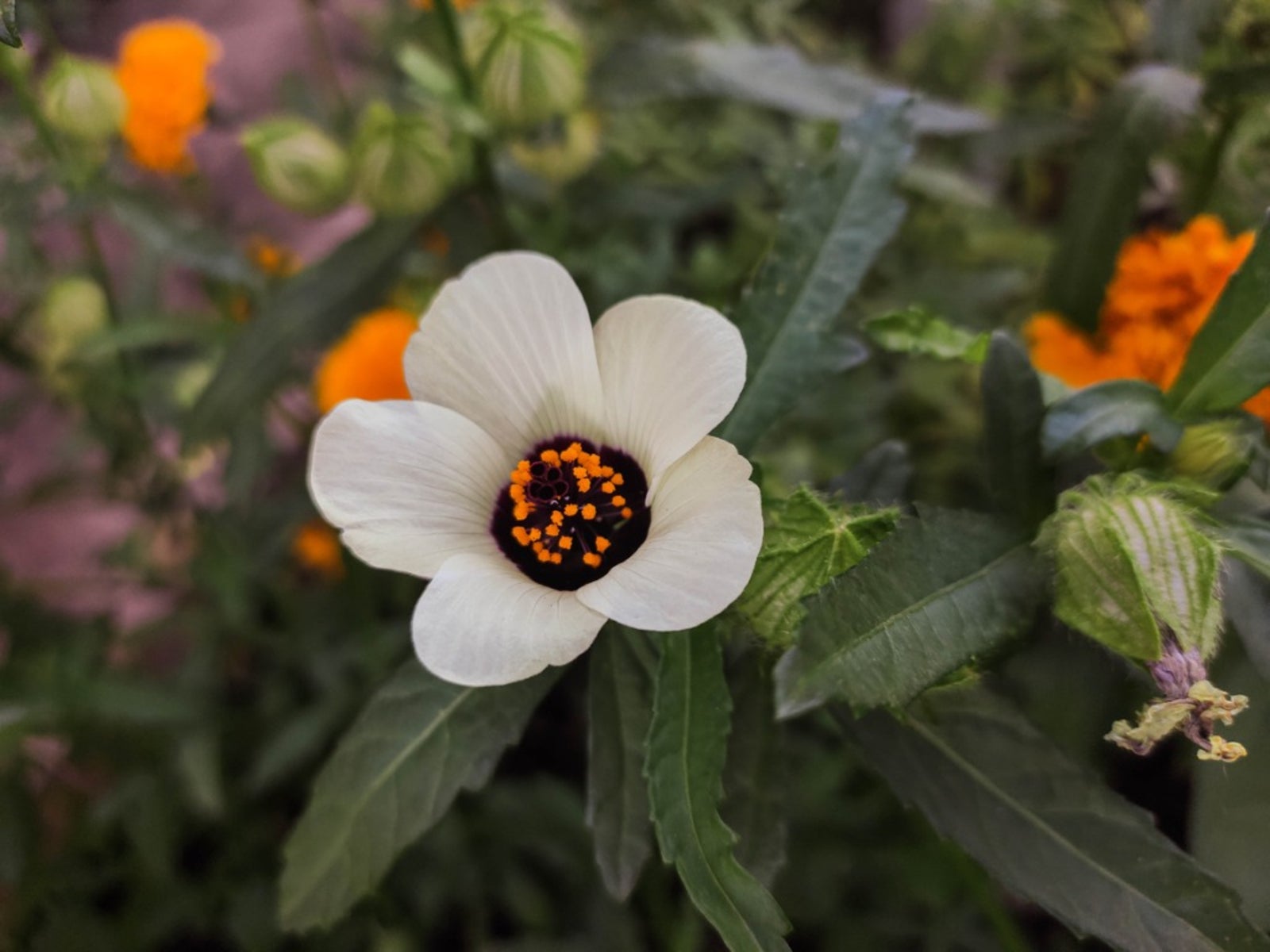Flower Of An Hour Info: Tips For Growing Flower Of An Hour


The flower of an hour plant (Hibiscus trionum) gets its name from the pale yellow or cream colored blossoms with dark centers that only last a fraction of a day and don't open at all on cloudy days. This charming little plant is an annual hibiscus, but it self-seeds vigorously so that it comes back each year from the seeds dropped by the previous year's plants. Also called Venice mallow, the delightful flowers and interesting growth habit makes it well worth adding to your beds and borders. Read on for more flower of an hour info.
What is Flower of an Hour?
Hibiscus flower of an hour is technically a perennial in frost-free areas, but it is usually grown as an annual. It forms a neat mound about 18 inches to 24 inches (46-61 cm.) tall and blooms between midsummer and early autumn. The flowers are pollinated by nectar-feeding insects, including bumblebees and butterflies, which hover around the plant during the bloom season. Once the flowers fade, inflated seed pods take their place. They open when ripe, scattering seeds indiscriminately throughout the garden. The plant can become weedy and, in fact, is listed as an invasive species in Washington and Oregon.
Growing Flower of an Hour
Growing flower of an hour is easy, but you won't find bedding plants so you'll have to start them from seeds. Sow seeds outdoors in fall and they will germinate in spring when the soil stays warm both day and night. Since they are slow to emerge, mark the spot so you can remember to leave them plenty of room. You can get a head start by starting the seeds indoors four to six weeks before the last expected frost date. They can take two months or more to germinate. Give flower of an hour plants a location in full sun with rich, moist soil that drains well. If the soil isn't particularly rich, amend it with compost or other organic matter before planting. Use 2 to 3 inches (5-8 cm.) of mulch to help the soil hold moisture. Water the plants slowly and deeply in the absence of rain, stopping when the water begins to run off. Pull back the mulch and spread 2 inches (5 cm.) of compost over the root zone in midsummer before the plants begin to bloom. Picking off faded blossoms may help prolong the bloom season and prevents self-sowing, but it may be more trouble than it's worth because of the number of blossoms produced.
Gardening tips, videos, info and more delivered right to your inbox!
Sign up for the Gardening Know How newsletter today and receive a free copy of our e-book "How to Grow Delicious Tomatoes".

Jackie Carroll has written over 500 articles for Gardening Know How on a wide range of topics.
-
 8 Perfect Flowers To Plant With Tomatoes To Boost Yields & Banish Pests
8 Perfect Flowers To Plant With Tomatoes To Boost Yields & Banish PestsDon’t forget flowers when choosing companion plants for your tomato beds or pots. These pretty, fragrant blooms add beauty but are also highly beneficial.
By Mary Ellen Ellis
-
 Want The Longest Lasting Hydrangea Flowers? Grow These 8 Panicle Hydrangea Varieties
Want The Longest Lasting Hydrangea Flowers? Grow These 8 Panicle Hydrangea VarietiesFor ornamental shrubs that deliver the longest flowering seasons with plush blooms and delicate hues, these panicle hydrangea varieties are essential in your yard
By Tonya Barnett